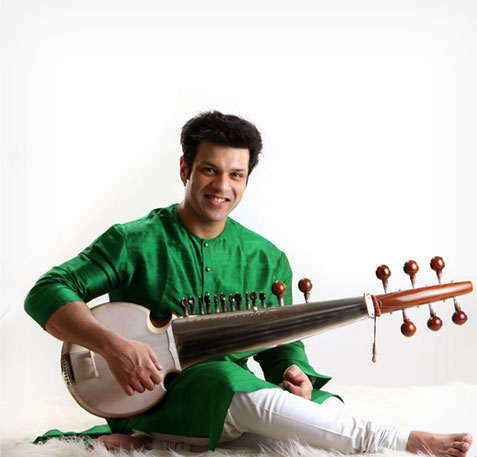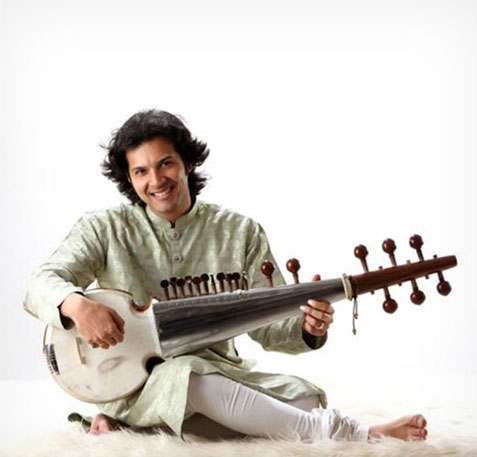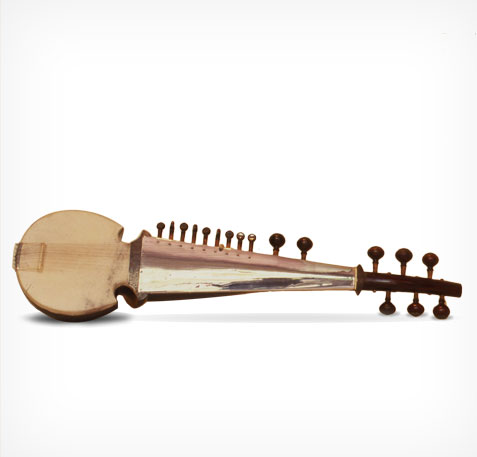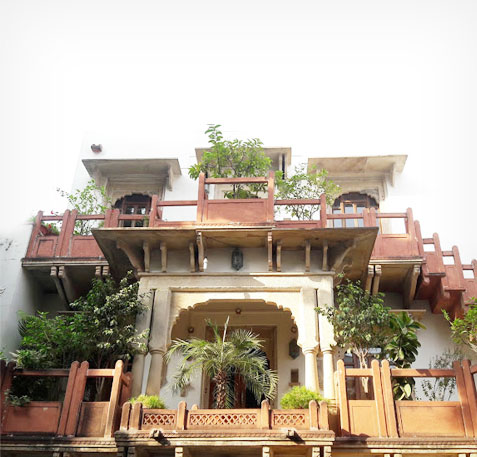In the year 1990, I was very fortunate to have had the honour of performing in Iraq for the music lovers of Baghdad. I was very blessed that I could offer my respect at the Shrine of Hazrat Ali, also known as Masjid Ali or the Mosque of 'Alī, located in Najaf, Iraq. Each year millions of pilgrims visit the Shrine and pay their tribute. I met numerous artists and musicians who were well known in the circle including Munir Bashir, often called the King of Oud (an instrument commonly used in Arabic, Greek, Turkish and Persian countries). The Arab world refers to specific melodic modes as maqam. Like Indian Classical Music, based on rules, they improvise too. And like Ragas, they have various maqams, each with its own mood and entity. There are between fifty and seventy maqams, many of which have sub-styles. My association with oud continued in the years to come as I made an album called Ancient Sounds in the year 2009 with Rahim Alhaj who is now based in the US. The album went on to get a Grammy Nomination in 2010 in the Best Traditional World Music Recording category. Rahim was forced to leave Iraq due to his activism for peace in the nineties and began his life in Jordan and Syria, finally moving to the US. It really saddens me to see the sad plight of Iraq yet again. I pray for eternal peace and harmony for the region and in fact for the world!
Seeing all the temples, mosque, and churches all over the world, I am amazed to see how they are considered vastly different -- and become a source of conflict and strife -- when the sacred truth is that all the religious buildings are made out of same sentiment of love and oneness of the individual soul (atmaa) with the universal soul (Parmatmaa). We all come to this world in the exact same way and also go away in the same way. Who created this huge void between humanity through highlighting the differences between shrines, nations, communities and religion? Why should we accept it and not challenge it with an alternative notion of oneness versus divisiveness? I hope that through music, being the food for the soul, we can make a salutation to unity through forging greater peace, goodwill and understanding, so that the vast divide and chasm that has taken place between the West and the East today, and between the Islamic and non-Islamic world, due to ignorance, deliberate or otherwise, can be reduced if not eliminated.
I find that our mind is like any living organism. It must be nurtured, and needs the right stimulation to develop and grow into a sensitive mind that is tolerant of the beautiful and abundant diversity surrounding us. We need ways to feel “oneness” whether through music, poetry, dance or any other medium that touches not just the intellect but also the soul. As we use flowers -- for welcoming, for worshiping and honoring our Gods, and in celebration and sorrow -- no matter what our race, origin, religion or language, we similarly arrange musical notes into 'bouquets' or compositions which display all our human feelings and emotions. Musical vibrations of “Sarod” can convey beautiful moods and emotions and have the ability to mold and shape our consciousness. I wish to have my music shape the consciousness in a way that contributes to oneness. I would like to continue to deepen this experience and make more and more people aware, around the globe, of the long lasting impact and benefits of Indian classical music versus the mainstream Bollywood music that provides fleeting and momentary relief.
Unfortunately today, most people, rich or poor, have lost patience with classical music in their search for a “quick fix” for entertainment. However, I find that those who persevere, find lasting peace and fulfillment. I often speak about this vocally in my concerts and encourage the poor to pursue this wonderful art form that has been practiced in India for centuries to find themselves and their inner voice. Classical Indian instrumental music, such as what I play on the Sarod, is pure sound. It needs to be experienced and felt. Since there are no lyrics, there is no language barrier between the performer and the listener, and that is why I feel my music transcends all barriers and classes.






